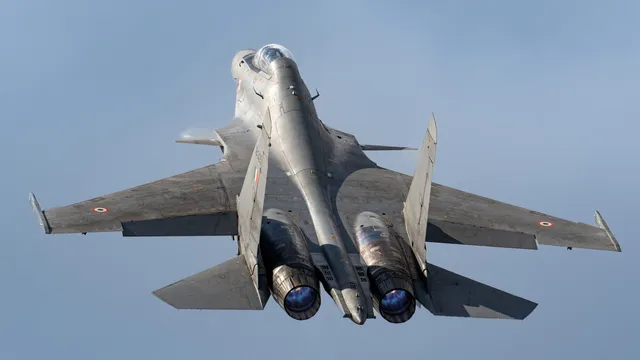
India significantly disrupts major terrorist operations in Pakistan
2025-05-20 14:30- Operation Sindoor was launched by India on May 6-7, 2025, targeting terrorist headquarters in Pakistan.
- The operation aimed to punish masterminds responsible for the Pahalgam terror incident and was executed to minimize collateral damage.
- It showcased India's ability to strike high-value military assets, raising questions about future India-Pakistan engagements.
Express your sentiment!
Insights
On the night of May 6-7, 2025, India launched Operation Sindoor, aimed at punishing terror masterminds and operatives in Pakistan responsible for the Pahalgam terror incident. This operation resulted in the significant destruction of the Lashkar-e-Taiba headquarters in Muridke and Jaish-e-Muhammad headquarters in Bahawalpur, both located in Pakistan's Punjab province. The strategic choice of targets, made to minimize collateral damage, was informed by intelligence inputs. The action drew widespread condemnation worldwide but showcased India's commitment to countering terrorism. The operation was interpreted differently across various media outlets, with some views asserting it as a decisive advantage for India in military strategy, particularly regarding the ability to target high-value assets. It marked a shift in the ongoing conflict narrative between India and Pakistan, moving beyond symbolic strikes to substantial attacks on each other’s military capabilities. The implications of such operations have traditionally been seen as a balance of tactical accomplishments against strategic outcomes, indicating that the consequences of military actions extend beyond immediate results. While the operation was seen as a significant military effort, the strategic context included the ongoing dynamics of terrorist organizations based out of Pakistan, notably the Lashkar-e-Taiba and Jaish-e-Mohammed, both of which have faced international sanctions. The ability of these organizations to adapt and rebrand themselves after being banned poses a continual challenge to stability in the region. For years, Pakistan's ambiguous stance on these groups has allowed them to operate with relative freedom, leading to concerns within India regarding possible future threats. As India and Pakistan remain locked in a complex relationship characterized by intermittent conflict and dialogue, the effectiveness of India's military actions is hotly debated among analysts. The details surrounding Operation Sindoor and its aftermath will likely influence future engagements and diplomatic interactions between the two nations. Observers and policymakers will continue to monitor how such military operations shape the strategic calculus in South Asia and the broader implications for international security in the context of combating terrorism.
Contexts
The historical context of military operations between India and Pakistan is deeply rooted in the partition of British India in 1947, which created two independent nations: India and Pakistan. This partition was accompanied by mass migration and communal violence that resulted in significant loss of life and displacement of populations. The immediate aftermath of partition led to the first Indo-Pakistani war in 1947-48 over the princely state of Jammu and Kashmir, a conflict that continues to impact relations between the two countries. Despite a ceasefire brokered by the United Nations, the territorial dispute over Kashmir remained unresolved, fostering an environment of mistrust and militarization that has characterized subsequent interactions. In 1965, tensions escalated again, culminating in the Second Indo-Pakistani War. The conflict largely revolved around Kashmir, with both nations seeking control over the region. This war concluded with the Tashkent Agreement mediated by the Soviet Union, but it failed to resolve the underlying territorial issues, leading to ongoing military skirmishes and hostility. A significant turning point occurred in 1971, when Pakistan experienced a civil war resulting in the independence of East Pakistan as Bangladesh. The conflict and the subsequent defeat of Pakistan further strained relations and led to a renewed sense of enmity towards India, as Pakistan perceived the events as having been influenced by Indian intervention. The nuclear capabilities of both nations have added a new dimension to their military operations and strategic calculations. Following nuclear tests conducted by both countries in 1998, military operations have taken on a broader geopolitical context, particularly following events such as the Kargil conflict in 1999. This conflict was sparked by the infiltration of Pakistani soldiers and militants into positions in Indian-administered Kashmir, leading to a military confrontation that highlighted the risks of a nuclear conflict in South Asia. The Kargil War showcased the need for increased diplomatic engagement, yet incidents of terrorism and military skirmishes have continued to sow discord. In recent years, military relations between India and Pakistan remain tense, influenced by geopolitical developments, including U.S.-Pakistan relations, China-Pakistan collaboration, and India’s strategic partnerships with Western nations. The conflicts have often been exacerbated by acts of terrorism attributed to groups operating from Pakistan, which India perceives as a direct threat to its national security. While there have been efforts at peace talks and confidence-building measures, the cycle of violence and retaliation continues to undermine the prospect of lasting peace, as both nations prepare to address their military postures in a region fraught with historical grievances and modern complexities.